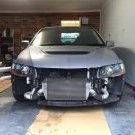So How Do I Want To Setup My Catch Can?
Announcements
-
Similar Content
-
Latest Posts
-
By soviet_merlin · Posted
Actually, I'd say all three are the automatic option. Just the different trim levels. The manual would be RSFS, no? -
By soviet_merlin · Posted
What Duncan said sounds right. Also, it looks like they only have the driver's mat. Not the rest. Because looking at the diagram: KG4911 is just the mat for the driver. KG4900 is the full set if I'm not mistaken and discontinued. But, it looks like they may still have the full set for the manual S2. Might be worth checking for the other models as well as they seem slightly different. https://www.amayama.com/en/genuine-catalogs/epc/nissan-japan/stagea/wgnc34/6649-rb25det/misc/G49 Man, I'm tempted. -
I dunno about that as a blanket statement. Pitwork is Nissan's "Nissan genuine" thing, and for stuff like timing belts, I have found them to be excellent. Of course, for things like oil filters, you always use proper trusted brands anyway, not whatever the OEM has taken to using.
-
Ahhhh... If you were putting 12V to the led in there, that's likely made it very unhappy. Chances are how you put power, was 12V across an LED that's meant to only have about 20mA through it at peak, and a forward voltage of about 1.8 to 2.4 volts. That circuit is likely only a 3V3 circuit, and will have a resistor in series with the led too. That's my guesstimate on that light, without having touched one.
-
By Murray_Calavera · Posted
Another vote for installing them and see how you go. I mean, you already own them, why would you not fit them?
-





Recommended Posts
Create an account or sign in to comment
You need to be a member in order to leave a comment
Create an account
Sign up for a new account in our community. It's easy!
Register a new accountSign in
Already have an account? Sign in here.
Sign In Now